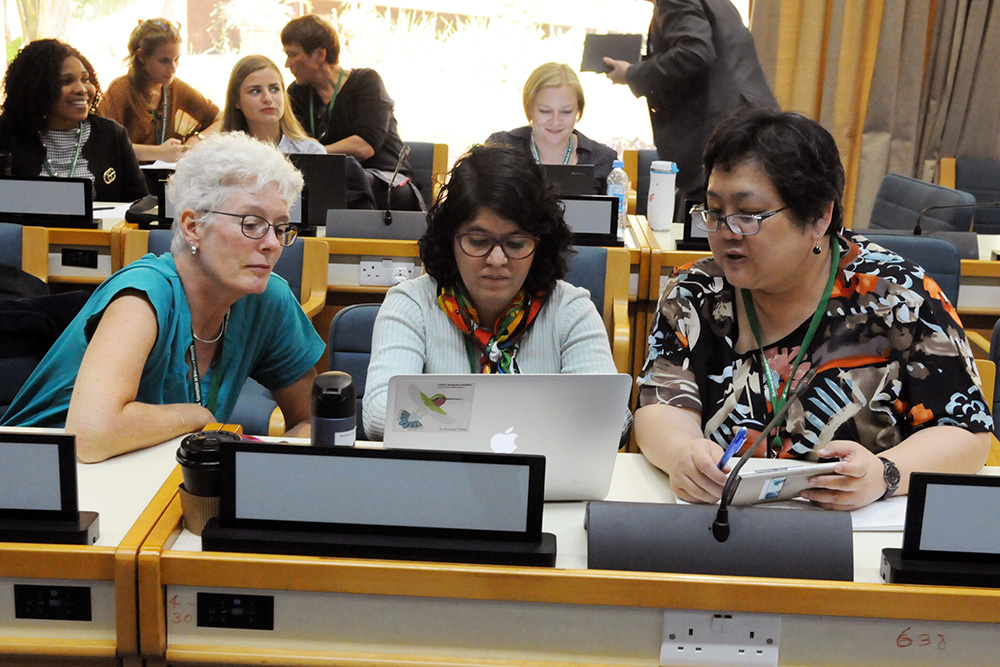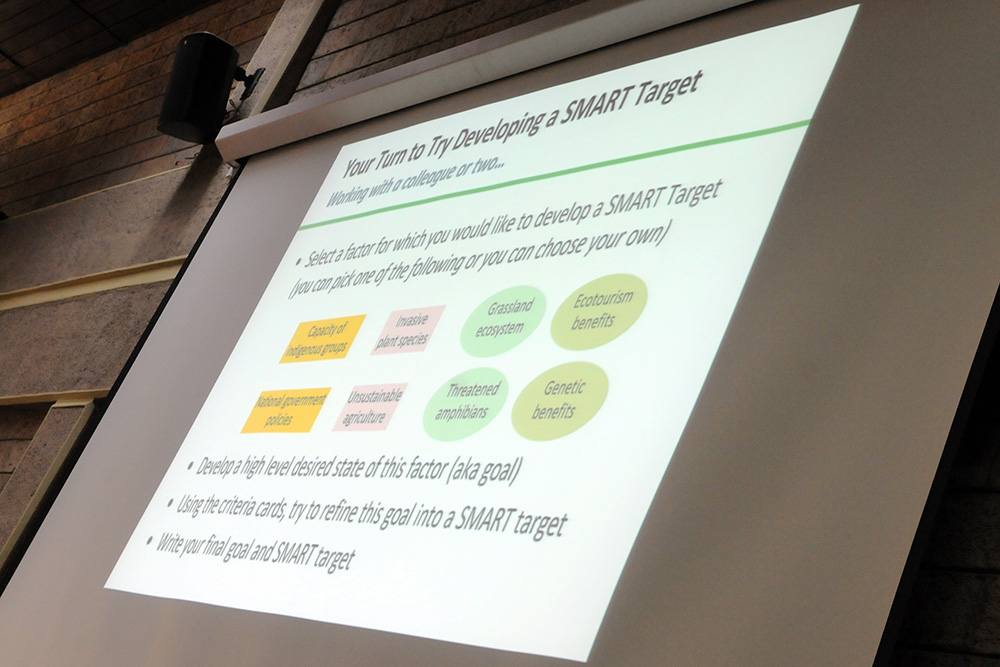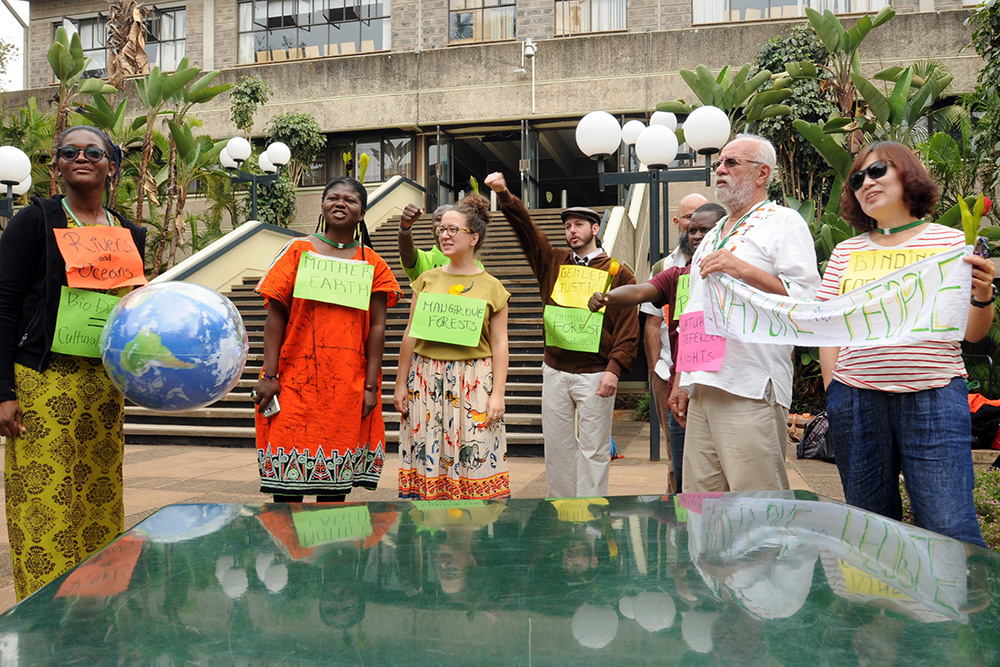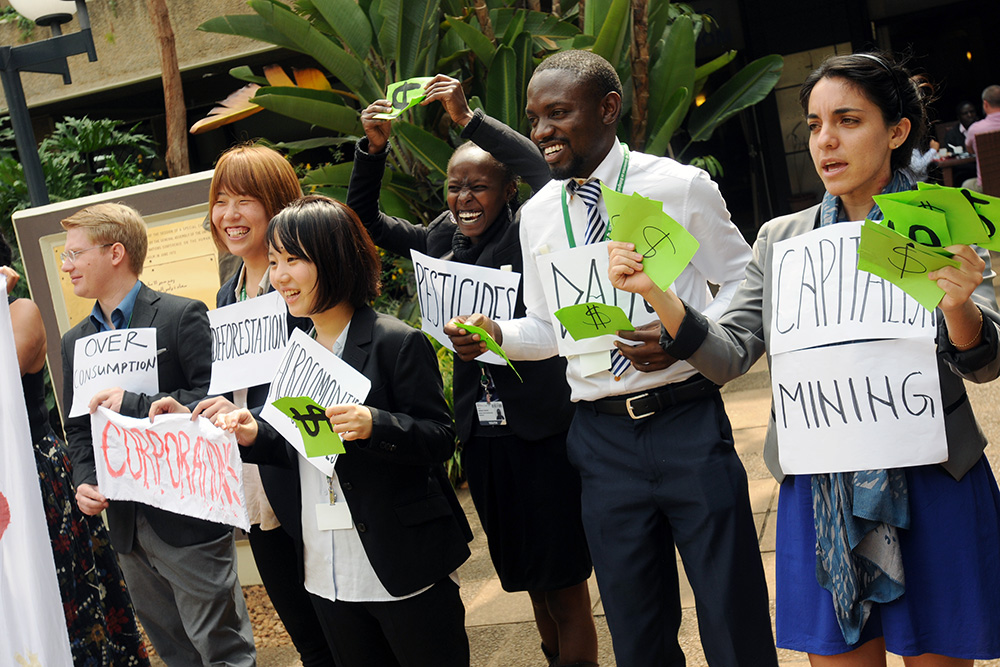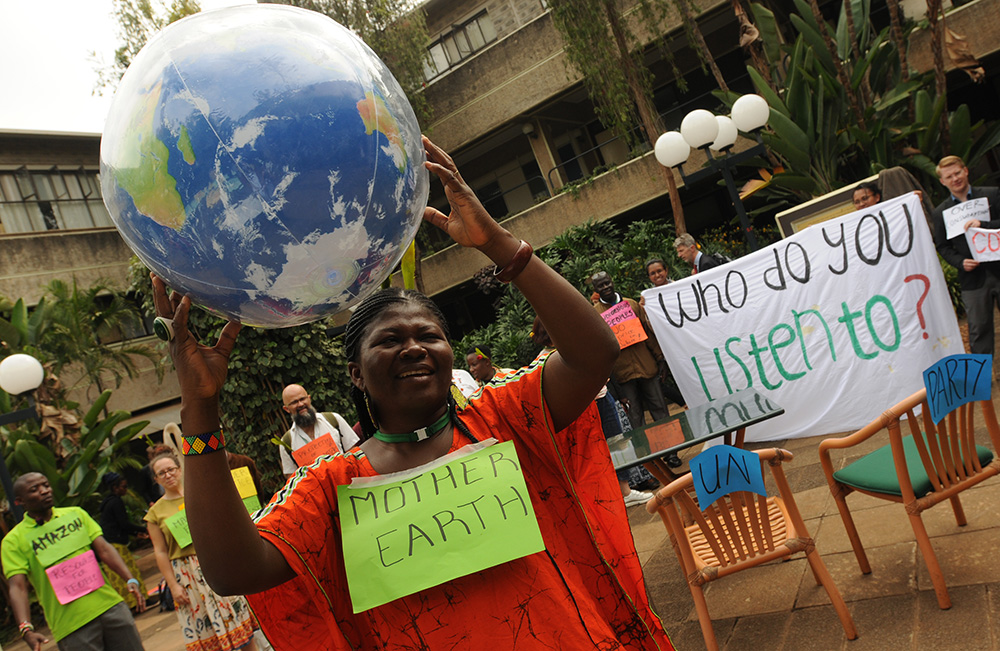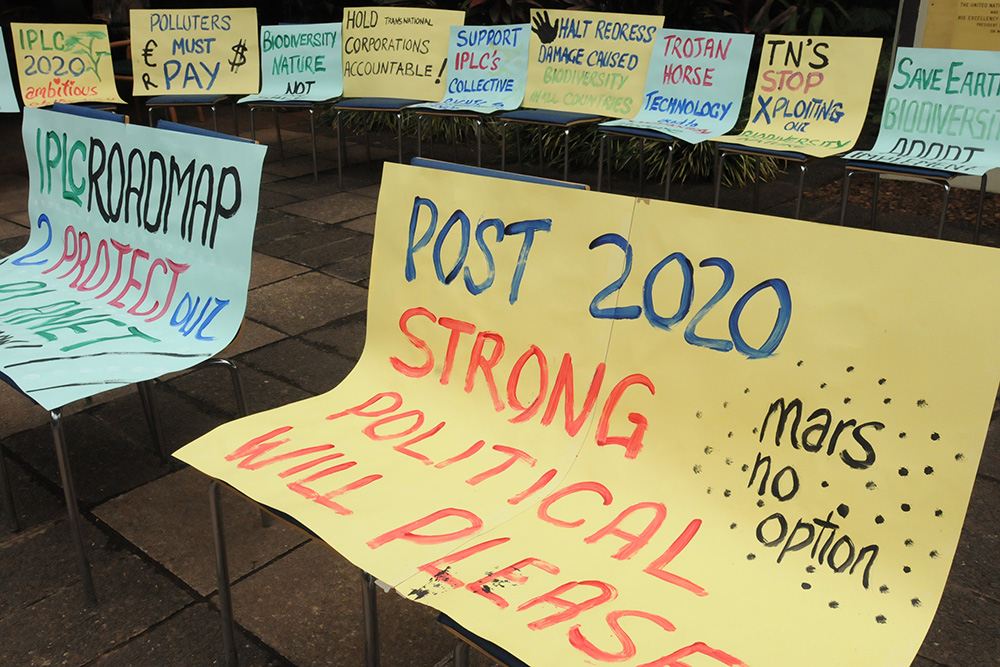Highlights for Thursday, 29 August 2019
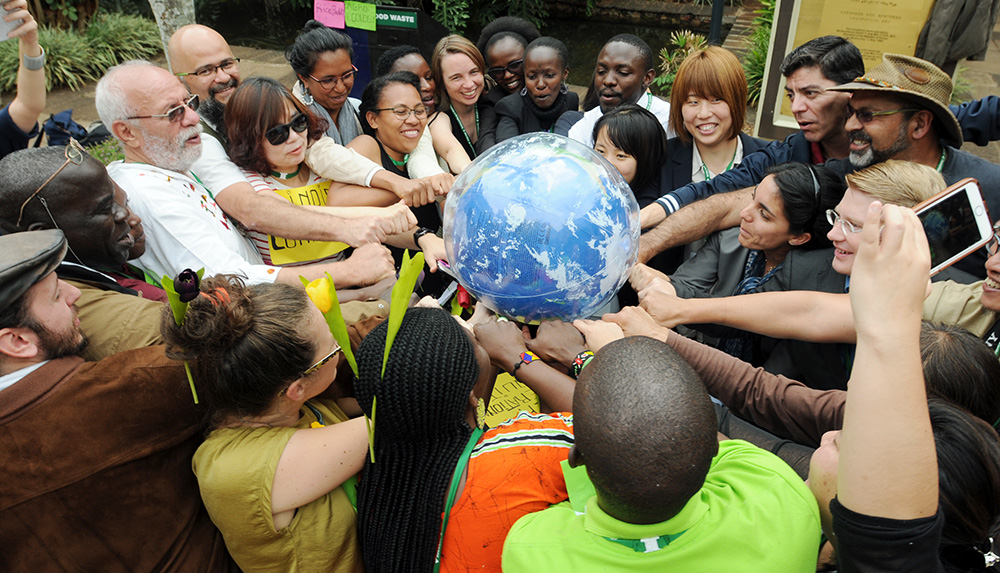
Representatives from civil society at the end of a peaceful demonstration about nature and people protection versus corporate interest.
The first meeting of the Working Group on Post-2020 resumed discussions on Thursday, tackling the future work programme of the Working Group and allocation of tasks to other intersessional bodies and processes. Delegates called for inter alia:
a balanced approach in thematic intersessional consultations;
ensuring draft text is available ahead of the second meeting of the Working Group; and
involvement of the UN Environment Management Group to ensure inputs from all multilateral environmental agreements.
During the lunch break, delegates attended an information session focused on strategic planning. Nick Salafsky, Foundations of Success, presented the second of a two-part series on developing a shared strategic planning framework. He led participants in an interactive exercise on developing Specific, Measurable, Achievable, Result-Oriented, and Time-limited (SMART) targets, using, among other principles, the theory of change.In the afternoon and evening, a discussion group co-chaired by Charlotta Sörqvist (Sweden) and Dilosharvo Dustov (Tajikistan) met to discuss a non-paper prepared by the discussion group co-chairs on a possible structure of the post-2020 global biodiversity framework (GBF). Delegates deliberated on the components of, and relationships between, the rationale, the preamble, the 2050 Vision, the 2030 mission, a possible apex goal and milestones, and goals, targets, sub-targets and indicators. Discussions focused on central questions to the structure, including, inter alia:
whether the 2030 mission should express an action to be taken or a status of biodiversity to be achieved by 2030;
how to express the 2030 mission in a simple manner while ensuring a balanced representation of all three pillars of the Convention;
how to formulate SMART goals, indicators and targets;
how to ensure that levers of transformative change are specified within the scope of the GBF; and
whether an apex goal would benefit or hinder effective implementation of the GBF.
With only one day left of the meeting, delegates continued to push towards a tangible outcome. One delegate remarked that we want to leave with clear guidance on the “post-2020 outcome we want” to enable us to return for the second meeting with more substance than a “to do list.” Some delegates were already eager to produce and negotiate text, and urged for ensuring that the second meeting will be furnished with comprehensive preparative documents. Many called for intersessional consultations that go beyond the subsidiary bodies of the convention, the Bureau and the Secretariat. The discussion group, some delegates noted, allowed for unpacking of details of the GBF’s scope and structure. Noting how much time was taken on targets, one delegate remarked that, “the apex target is becoming a distraction,” and that there should be more focus on implementation, which is indeed where we failed with the Aichi Biodiversity Targets.
IISD Reporting Services, through its ENB Meeting Coverage, provided daily web coverage from the 1st Meeting of the Open-ended Working Group on the Post-2020 Global Biodiversity Framework. In addition, IISD Reporting Services has published a summary and analysis report which is now available in HTML and PDF.
Photos by IISD/ENB | Diego Noguera
For photo reprint permissions, please follow instructions at our Attribution Regulations for Meeting Photo Usage Page
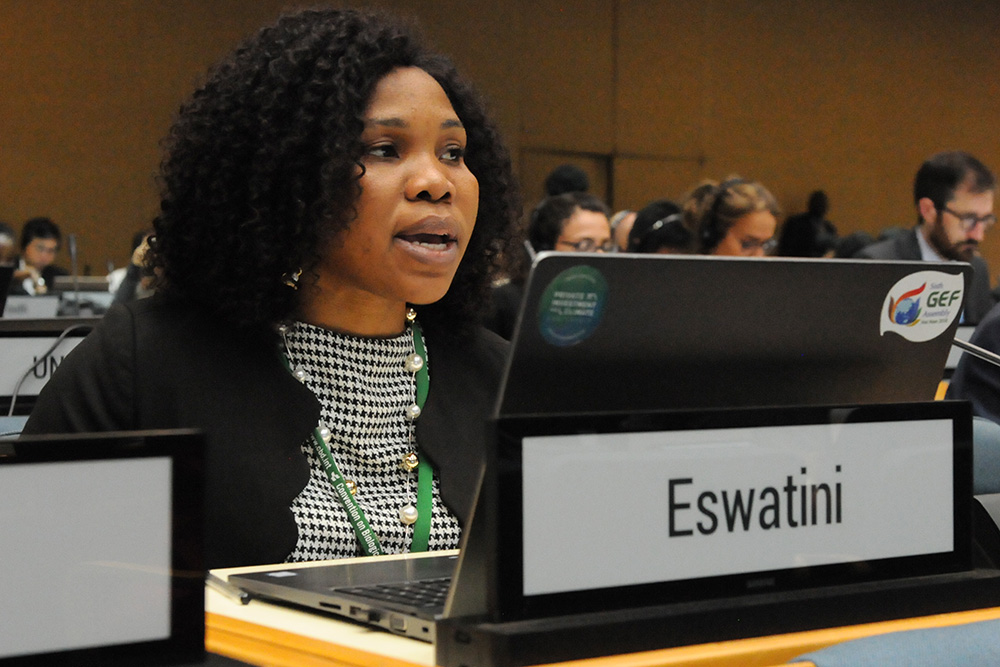
Hlobsile Sikhosana, eSwatini
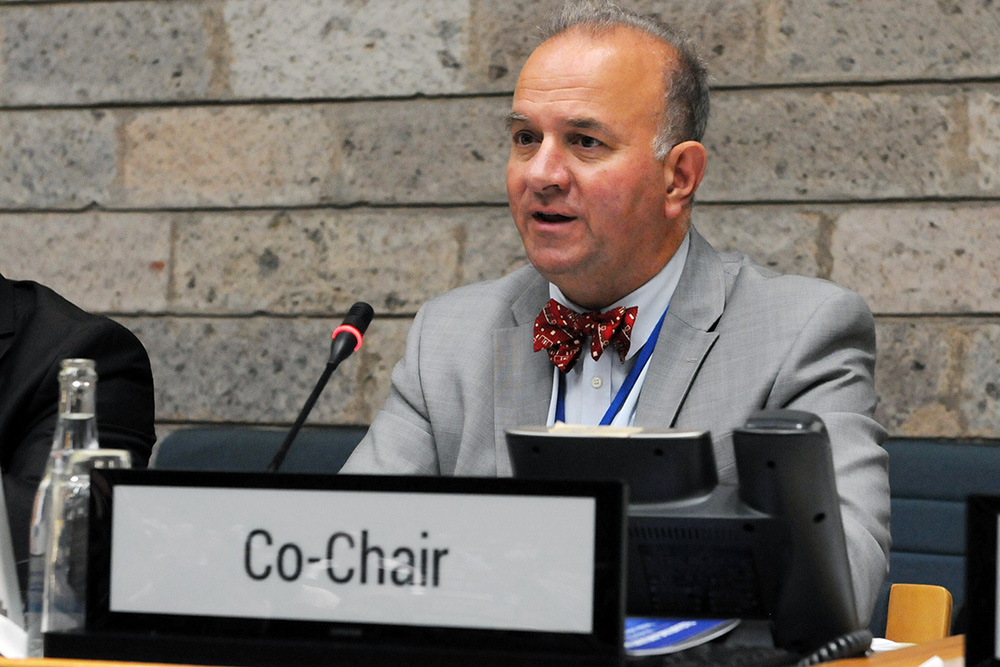
Working Group Co-Chair Basile van Havre, Canada
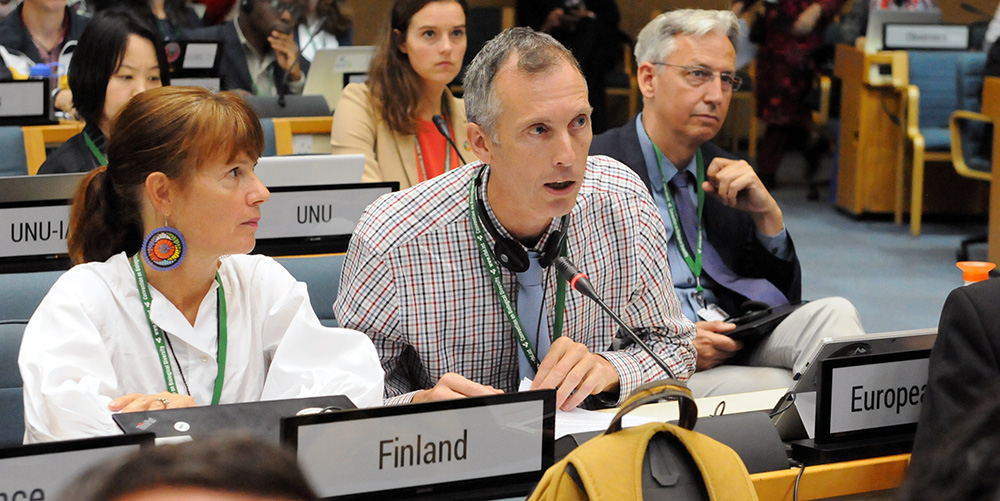
Marina von Weissenberg, Anne Theo Seinen, and Stefan Leiner, EU
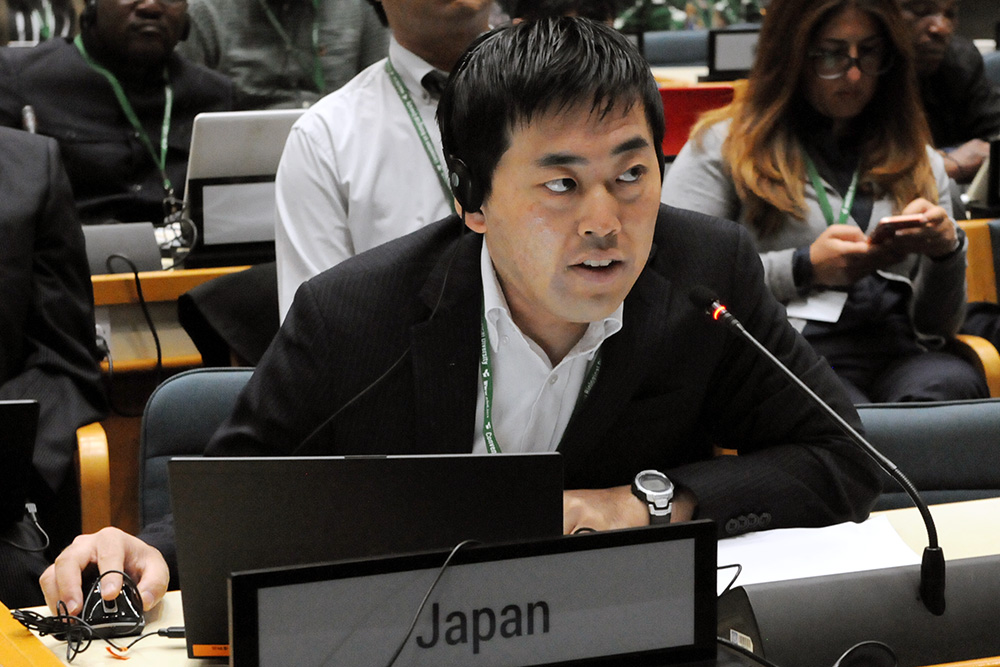
Takafumi Osawa, Japan
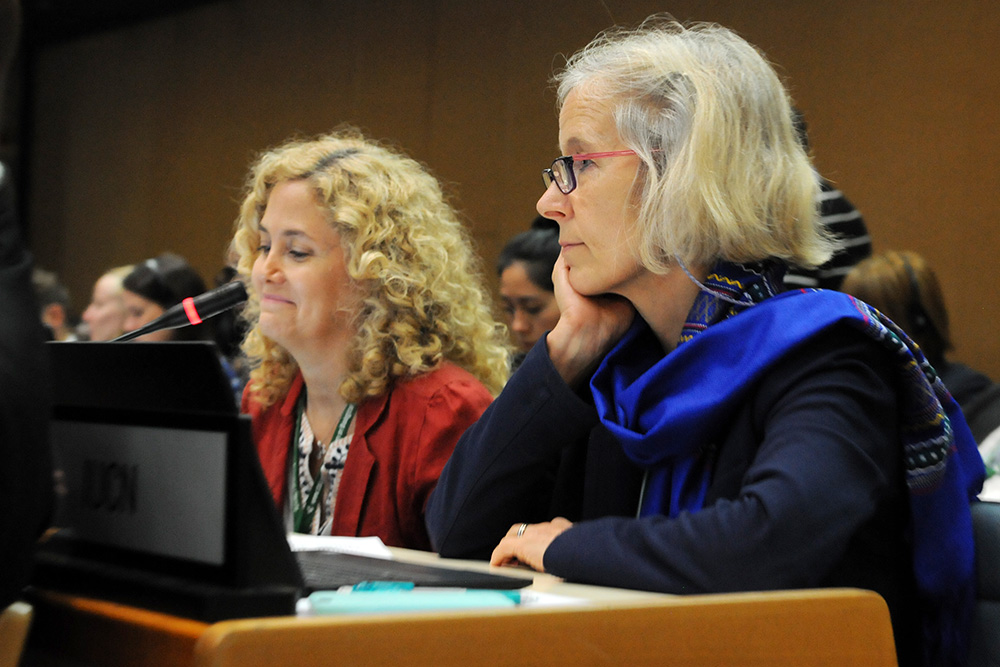
Sonia Peña Moreno, and Jane Smart, International Union for Conservation of Nature (IUCN)

L-R: Amy Fraenkel, Acting Executive Secretary of the Convention on the Conservation of Migratory Species of Wild Animals (CMS), and Tita Korvenoja and Diane Klaimi, UNEP
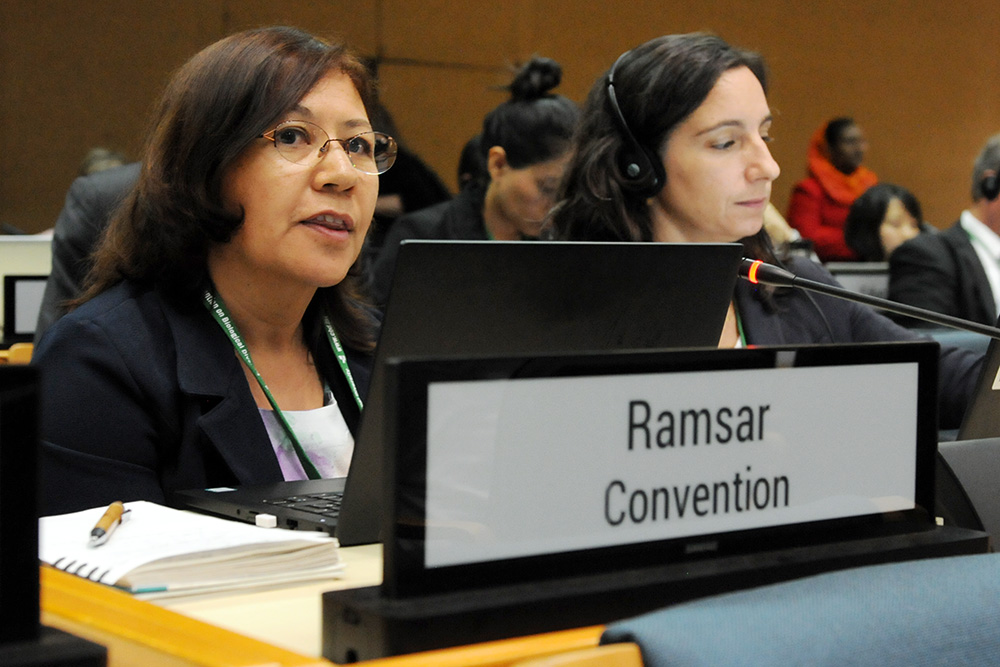
María Rivera, Ramsar Convention, and Katia Karousakis, Organisation for Economic Co-operation and Development (OECD)
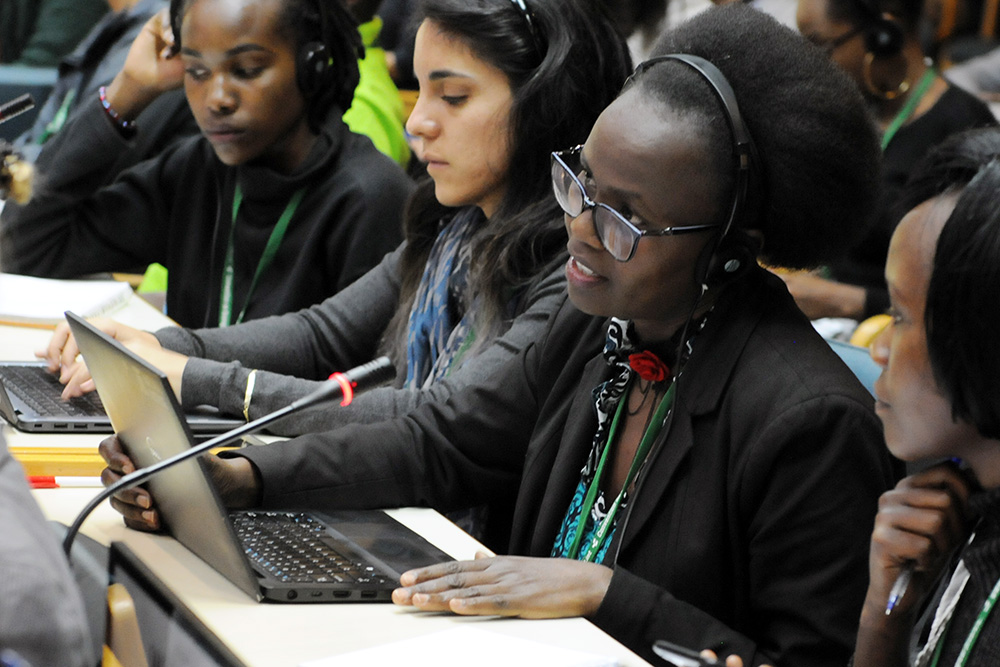
Cicilia Githaiga, Women
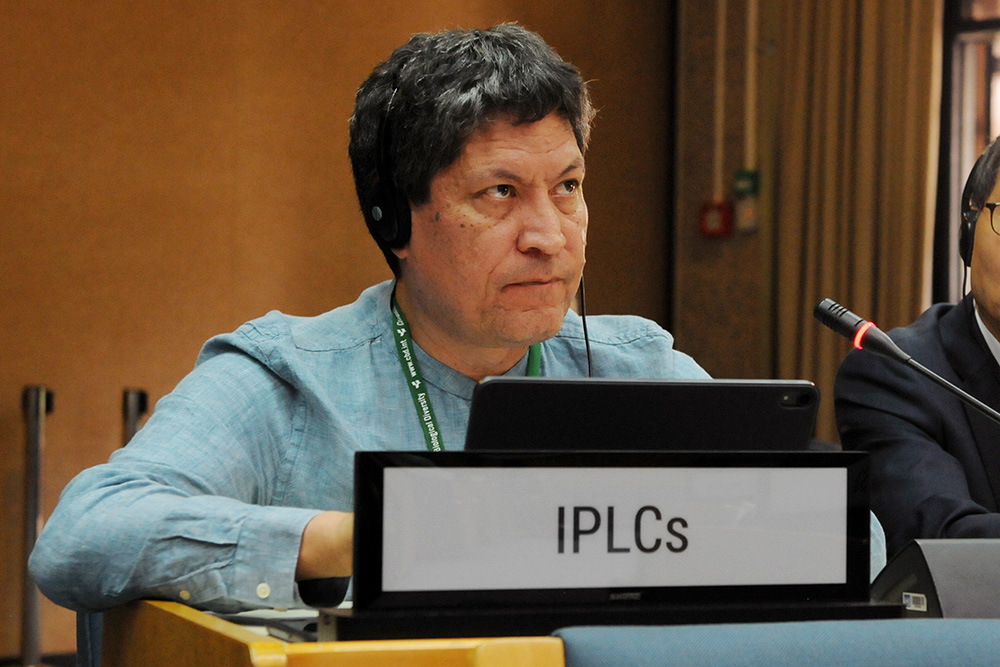
Ken Paul, Indigenous Peoples and Local Communities (IPLCs)
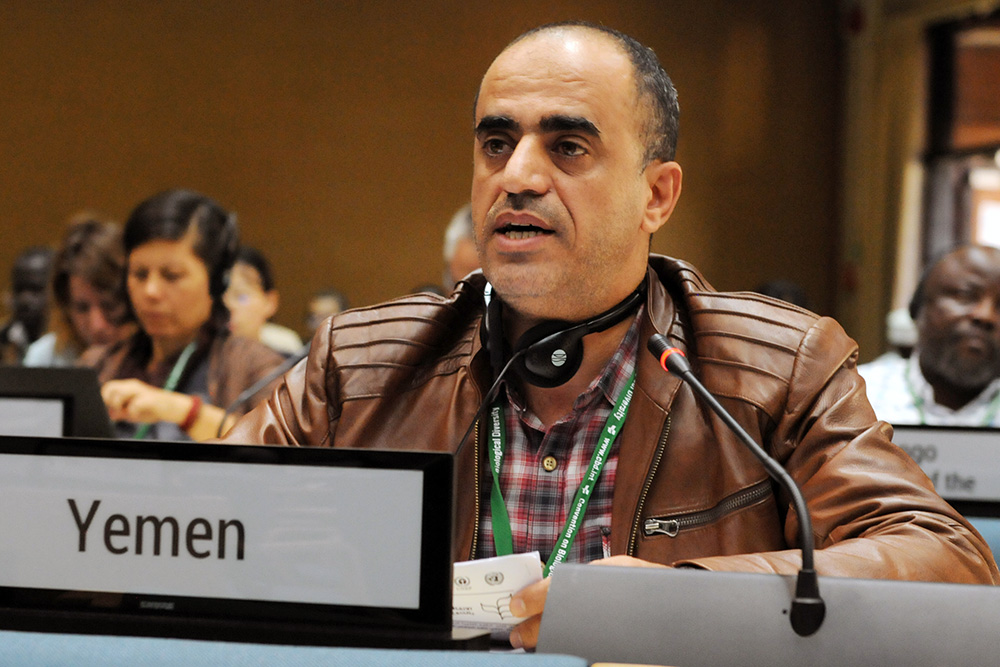
Abdulghani A.M. Al-Bokwali, Yemen
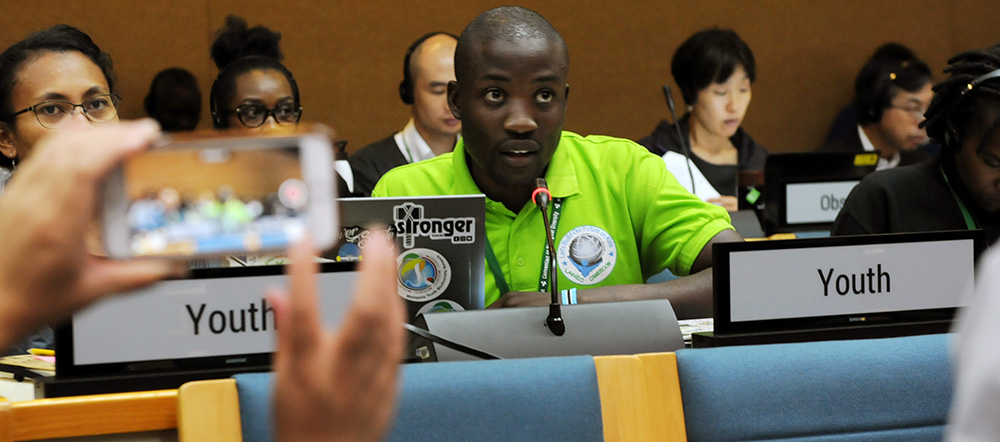
Kevin Lunzalu, Global Youth Biodiversity Network Kenya
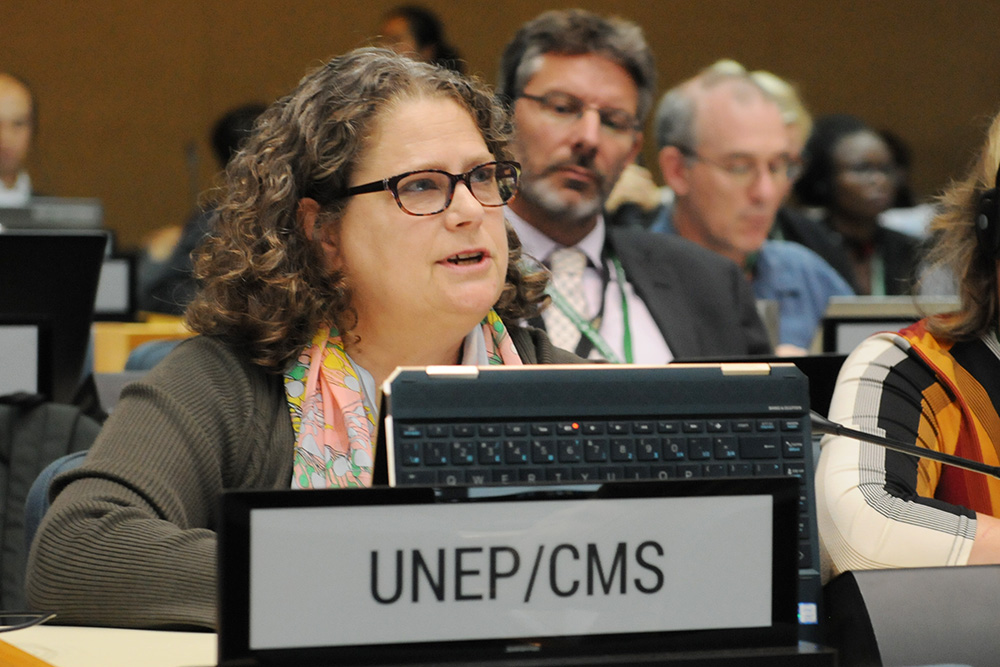
Amy Fraenkel, Acting CMS Executive Secretary
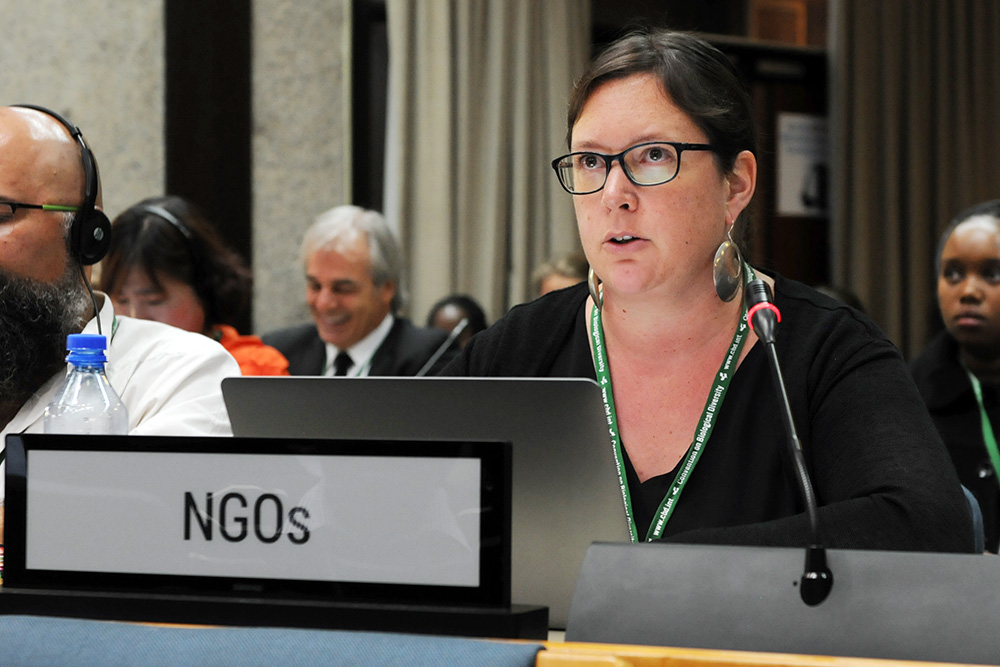
Barbara Lassen, Natural Justice
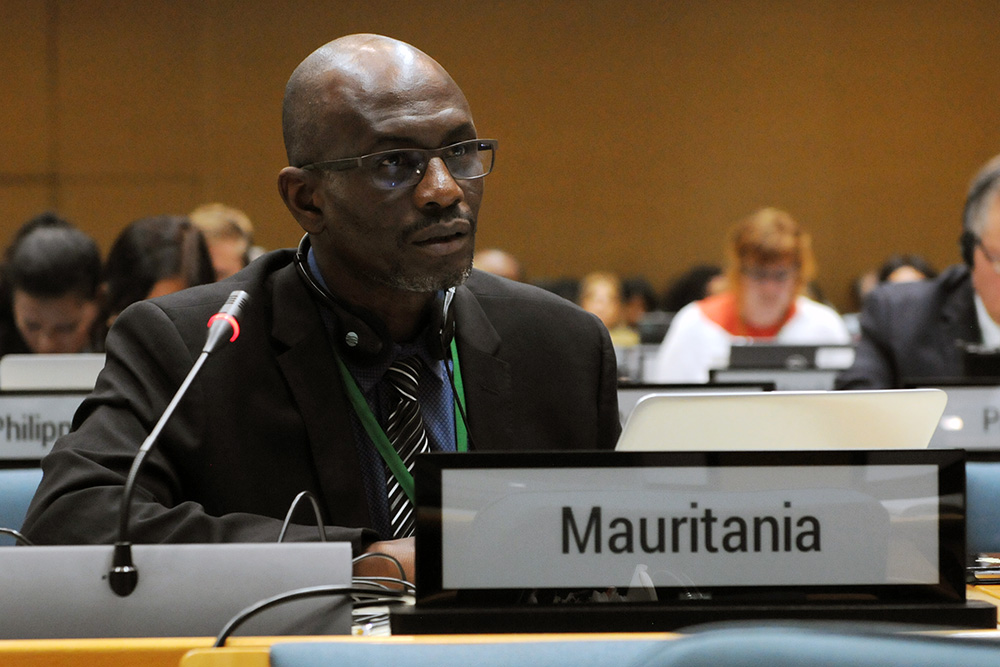
Diagana Mallé, Mauritania
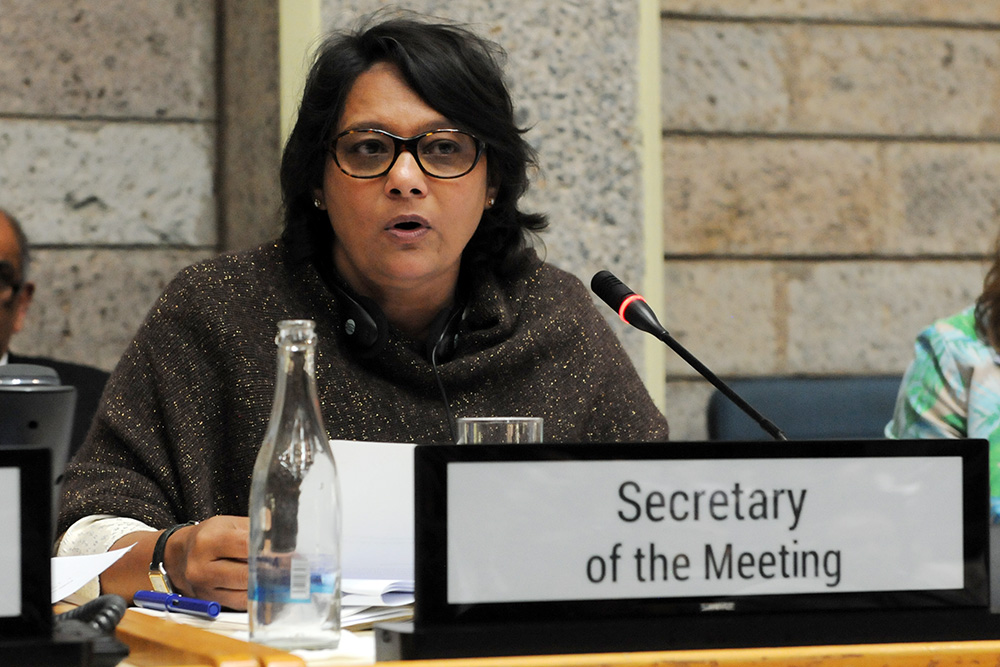
Jyoti Mathur-Filipp, CBD Secretariat
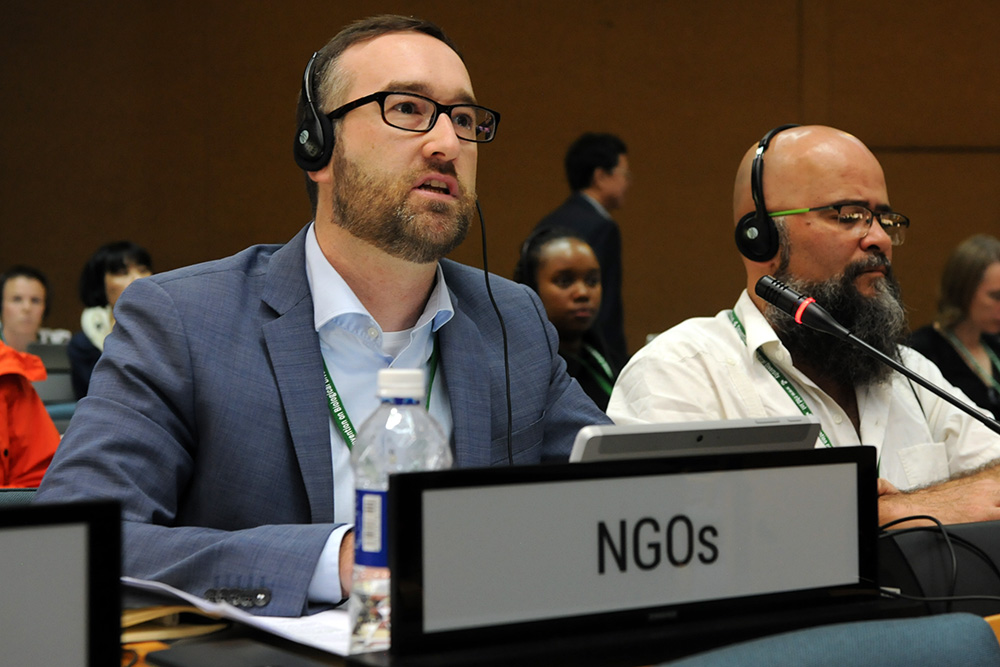
Malte Timpte, Institute for Biodiversity Network (IBN)
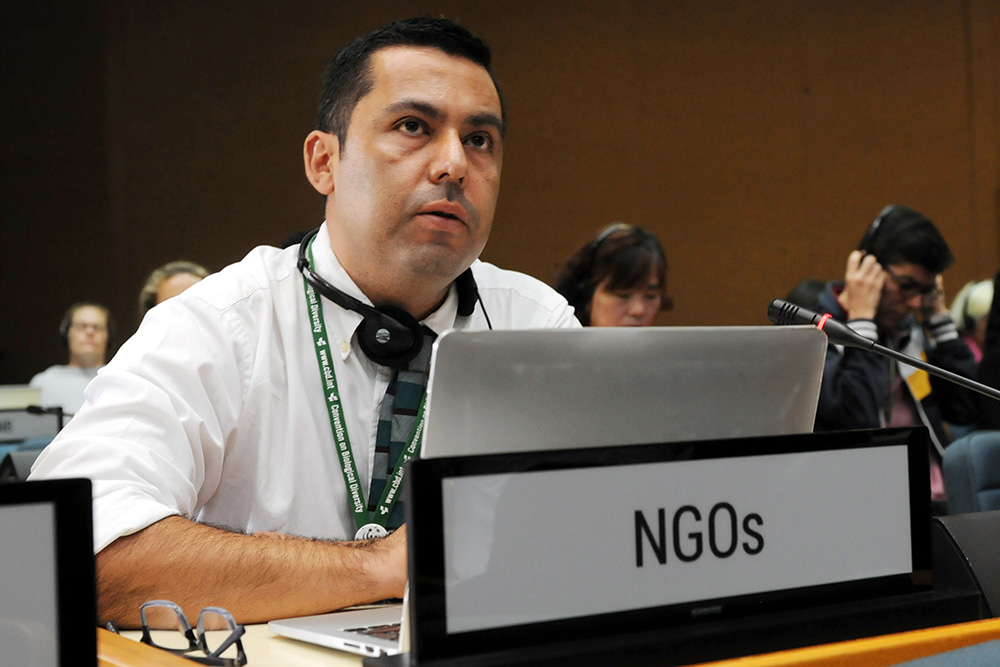
Óscar Guevara, WWF Colombia
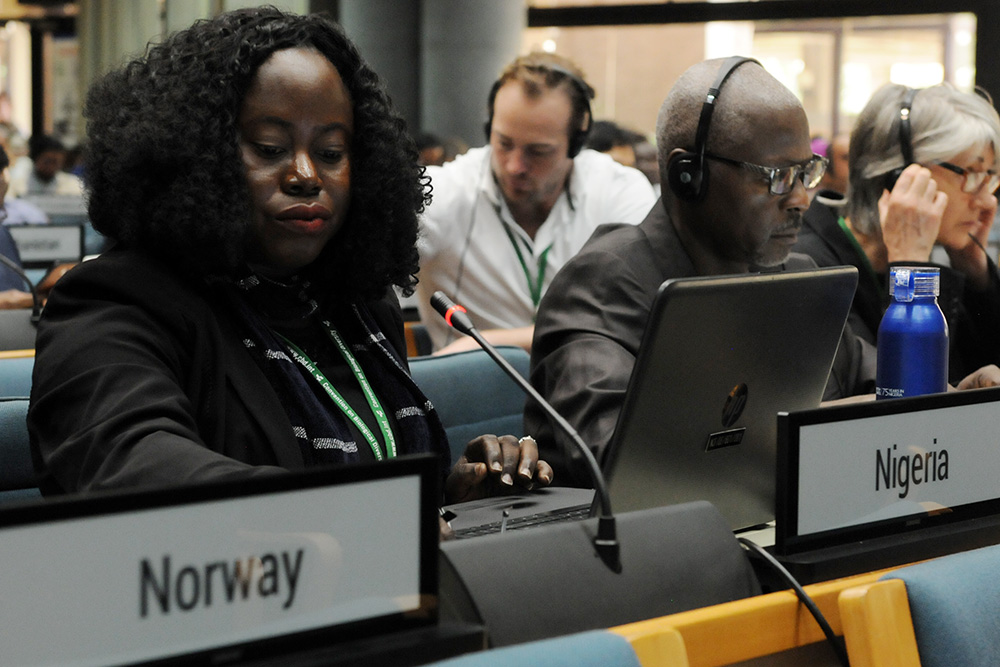
Yemisi Fawibe, Nigeria
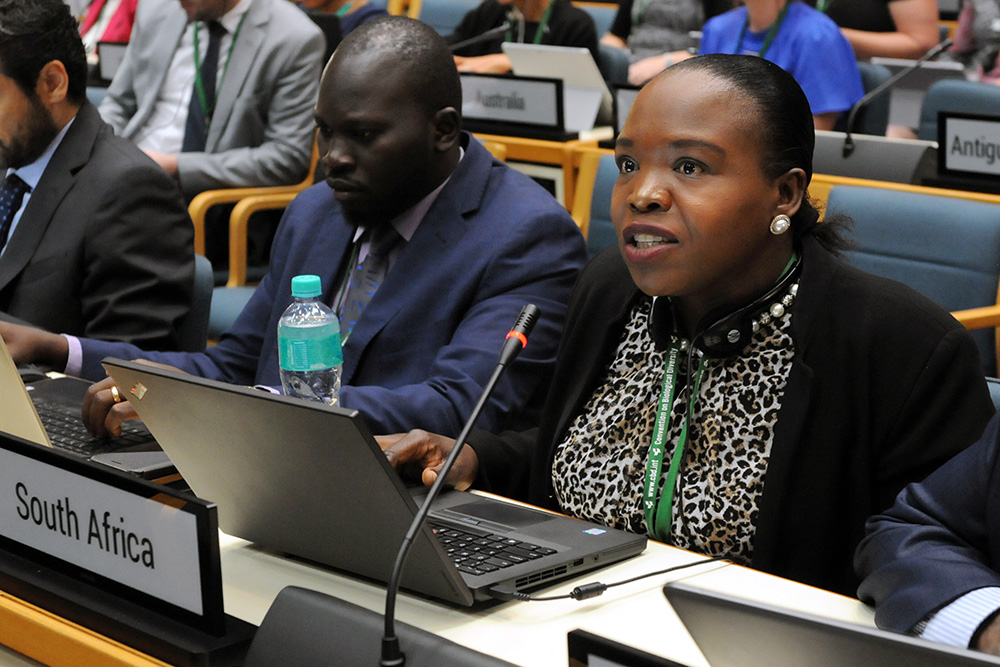
Lactitia Tshitwamulomoni, South Africa

Delegates continued work during the afternoon and evening on the potential elements and scope of the framework.
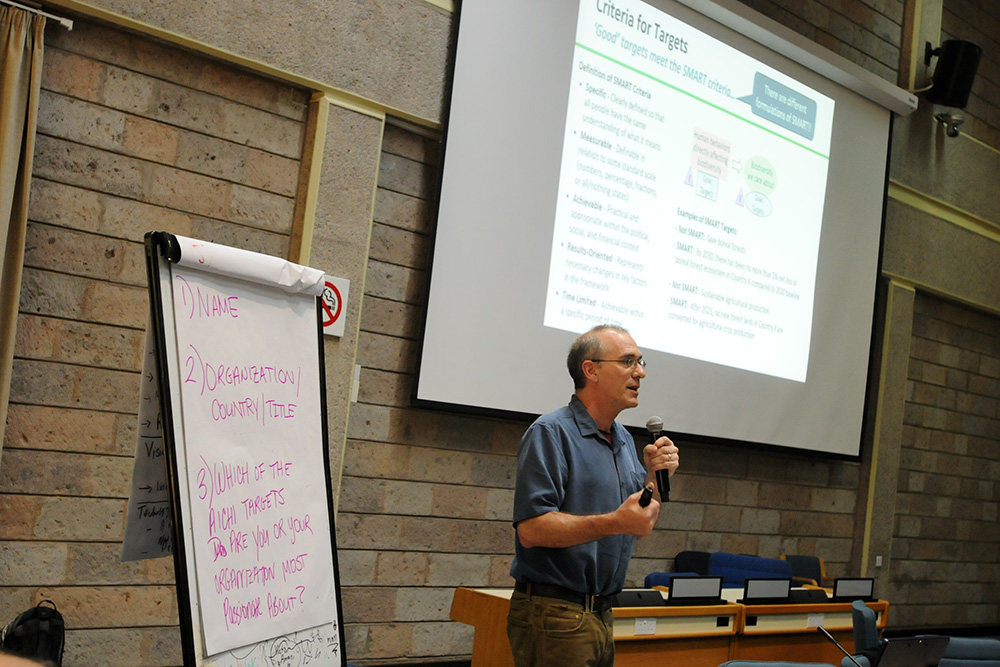
Nick Salafsky, Foundations of Success, during the lunch event on Strategic Planning Frameworks - Part II
Participants engage in an activity to develop a SMART target
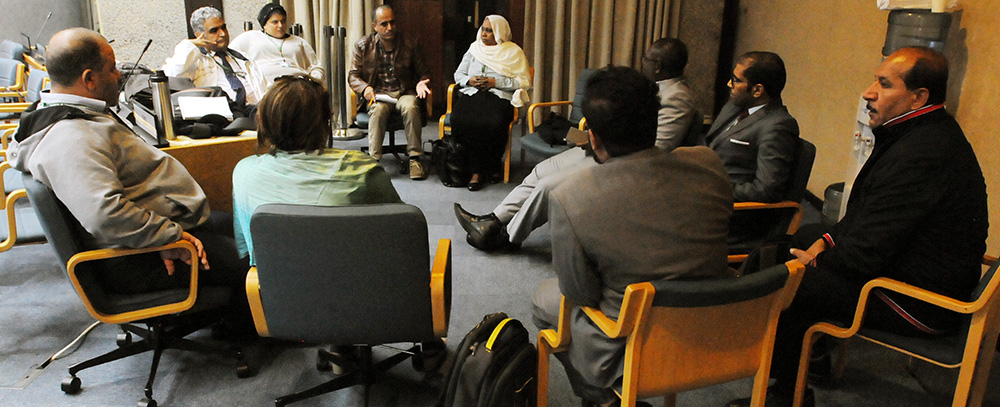
Delegates from the Arab region meet at lunch time
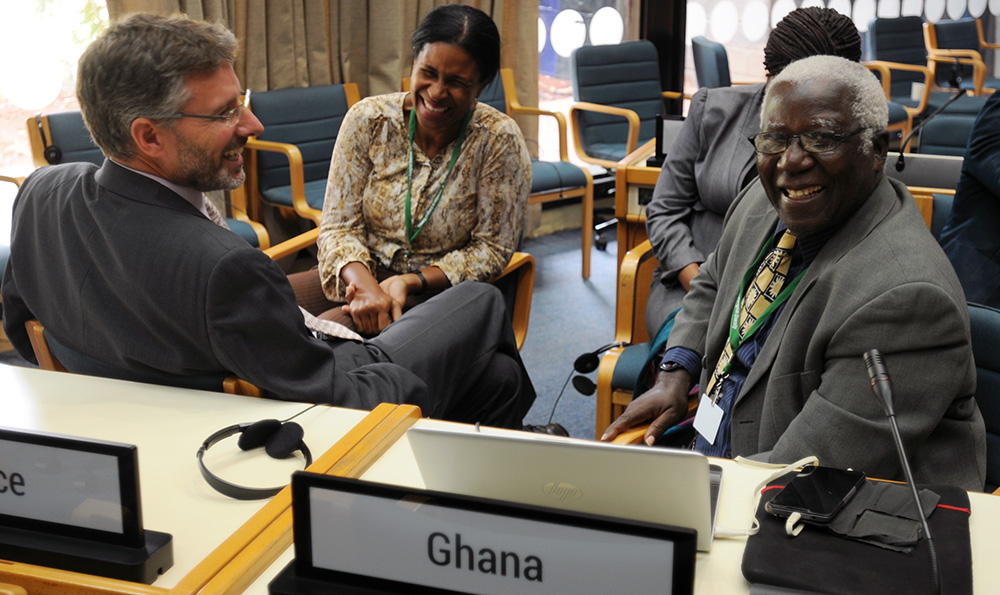
L-R: Neville Ash, Director, UNEP World Conservation Monitoring Centre (UNEP-WCMC); Aria St. Louis, Grenada; and Alfred Oteng-Yeboah, Ghana, share a laugh at the end of the morning session
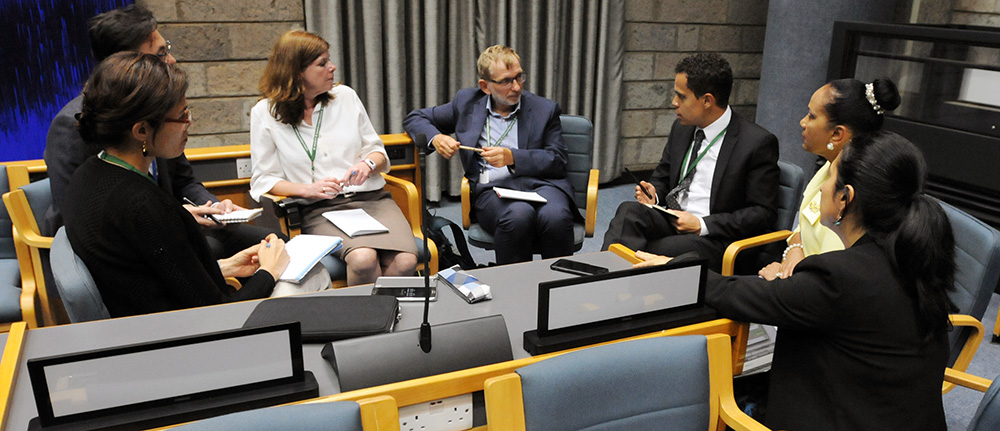
Evening informal consultations
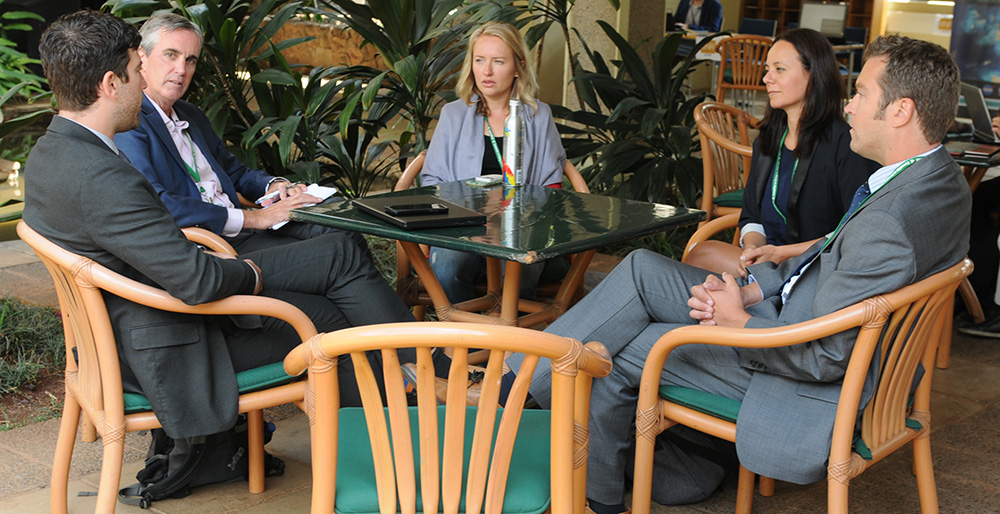
Members of the 30X30 Ocean Alliance meet outside plenary (L-R) Alfred DeGemmis, Wildlife Conservation Society; Justin Kenney, 30X30 Ocean Alliance; Masha Kalinina, Pew Charitable Trusts; Lina Barrera, Conservation International; and Michael Degnan, Campaign for Nature
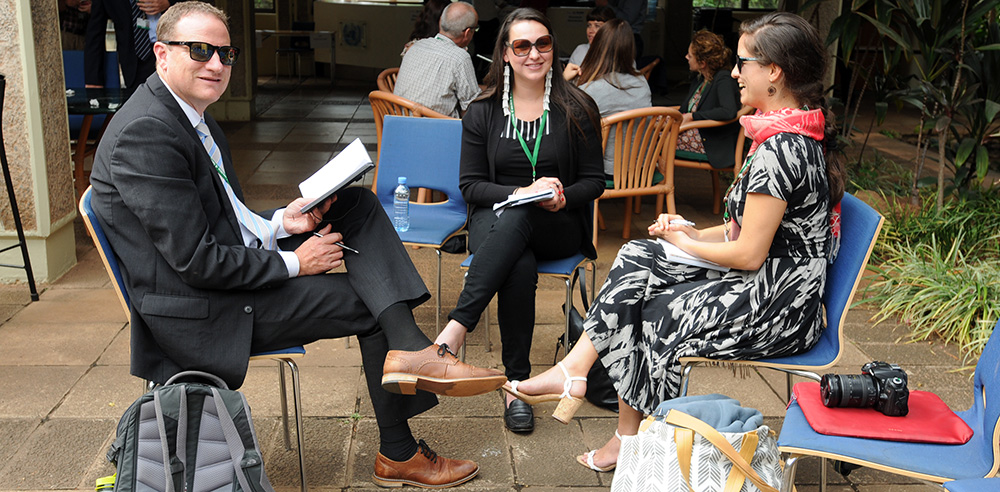
L-R: Brian O’Donnell and Raina Thiele, Campaign for Nature, and Holly Jonas, ICCA Consortium
Civil society asked parties “Who do you listen to: Nature & people or corporate interest?”






















